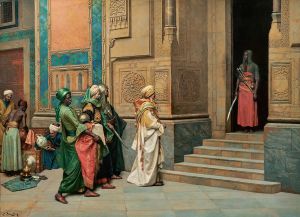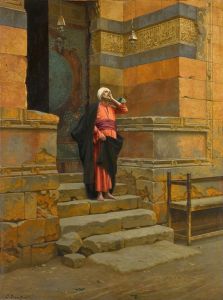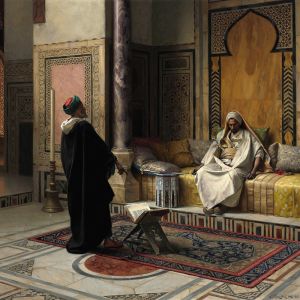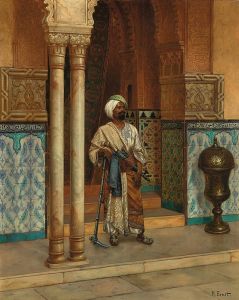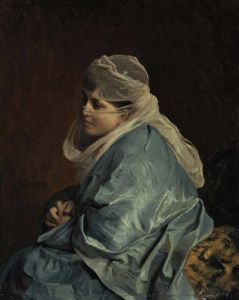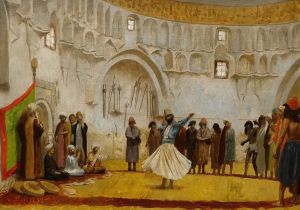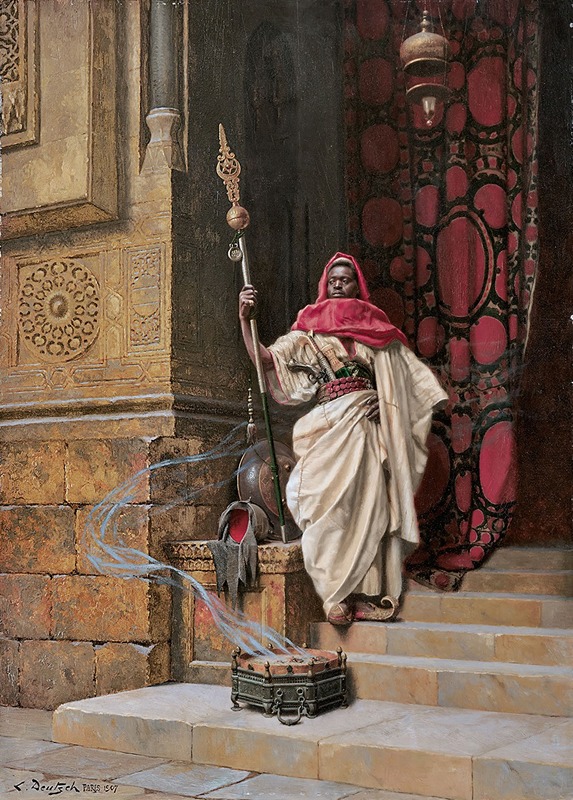
The Guard
A hand-painted replica of Ludwig Deutsch’s masterpiece The Guard, meticulously crafted by professional artists to capture the true essence of the original. Each piece is created with museum-quality canvas and rare mineral pigments, carefully painted by experienced artists with delicate brushstrokes and rich, layered colors to perfectly recreate the texture of the original artwork. Unlike machine-printed reproductions, this hand-painted version brings the painting to life, infused with the artist’s emotions and skill in every stroke. Whether for personal collection or home decoration, it instantly elevates the artistic atmosphere of any space.
Ludwig Deutsch was an Austrian painter known for his Orientalist works, and "The Guard" is one of his notable paintings. Born in Vienna in 1855, Deutsch studied at the Academy of Fine Arts in Vienna before moving to Paris, where he became part of the Orientalist movement. This movement was characterized by Western artists depicting scenes from the Middle East, North Africa, and Asia, often romanticizing these regions.
"The Guard" exemplifies Deutsch's meticulous attention to detail and his fascination with the cultures of the Middle East. Although specific details about the painting's creation and its current location are not widely documented, it is representative of Deutsch's broader body of work, which often focused on scenes of daily life, ceremonial events, and the architecture of the Islamic world.
Deutsch's paintings are celebrated for their vibrant colors, intricate details, and the artist's ability to capture the textures and materials of the subjects he depicted. In "The Guard," these elements are likely present, as Deutsch was known for his ability to render the intricate designs of textiles, the gleam of metal, and the play of light and shadow with remarkable precision. His works often featured guards, soldiers, or other figures in traditional attire, set against the backdrop of opulent architecture or bustling street scenes.
The artist's interest in Orientalism was part of a larger trend among European artists in the 19th century, who were inspired by the increased accessibility of travel to the East and the growing availability of photographs and written accounts of these regions. Deutsch, like many of his contemporaries, did not always travel extensively to the regions he painted; instead, he relied on photographs, artifacts, and other artists' works to inform his compositions.
Deutsch's work, including "The Guard," reflects both the fascination and the misconceptions that characterized Orientalist art. While his paintings are admired for their beauty and technical skill, they also contribute to the exoticized and often stereotypical portrayals of Eastern cultures that were prevalent in Western art of the time.
Throughout his career, Deutsch achieved considerable success and his works were exhibited widely. Today, his paintings are held in private collections and museums around the world, where they continue to be studied and appreciated for their artistic merit and their place within the Orientalist tradition.
In summary, "The Guard" by Ludwig Deutsch is a testament to the artist's skill and his engagement with the themes of Orientalism. While specific details about this particular painting may be limited, it remains an important part of Deutsch's oeuvre and the broader context of 19th-century European art.









